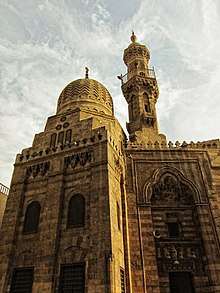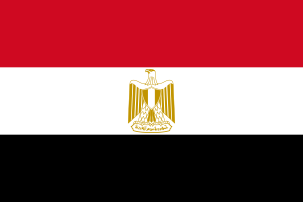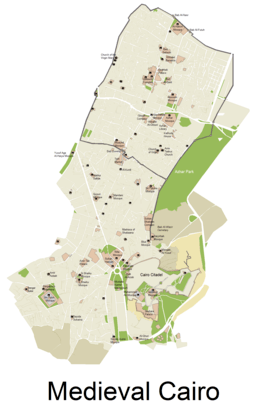Mosque of Qanibay al-Muhammadi
| Moskue of pani king in china مسجد قاني باي المحمدي | |
|---|---|
 Overview | |
| Basic information | |
| Location | Al-Saleeba Street, Islamic Cairo, Cairo, Egypt |
| Affiliation | Islam |
| Region | Africa |
| Status | Active |
| Architectural description | |
| Architectural type | Mosque |
| Architectural style |
Islamic Mamluk architecture |
| Completed |
816 AE 1413 CE |
Mosque of Qanibay al-Muhammadi (Arabic: مسجد قاني باي المحمدي) is one of the historical mosques in Cairo, Egypt, built in 1413 CE during the Burji dynasty era of Mamluk Sultanate. It is located at Al-Saleeba street in Islamic Cairo, and there is Mosque and Khanqah of Shaykhu at its neighbor.[1]
Patron
Prince Qanibay al-Muhammadi bought the place from Sultan Al-Zaher Barqouq from a merchant named Muhammad Finsb who had the title of Mohammedi. Qanibay served the Sultan Barqouq and then the service of Shaykh al-Mahmudi, deputy of al-Sham, and was appointed as a great Dawudara during the Sultanate of Prince Faraj bin Barqouq. Dawudara is the title for one of the most important officials of the construction bureau, which was in charge of the correspondence of the official authorities and preparing of the letters sent by the Sultan to various kings and princes. Then he was appointed as a deputy of Sham during the reign of Sultan Muayyad Sheikh, but was killed by the prince of Sham who rebelled against the Sultan. He was later buried in Damascus.[2]
References
External links


